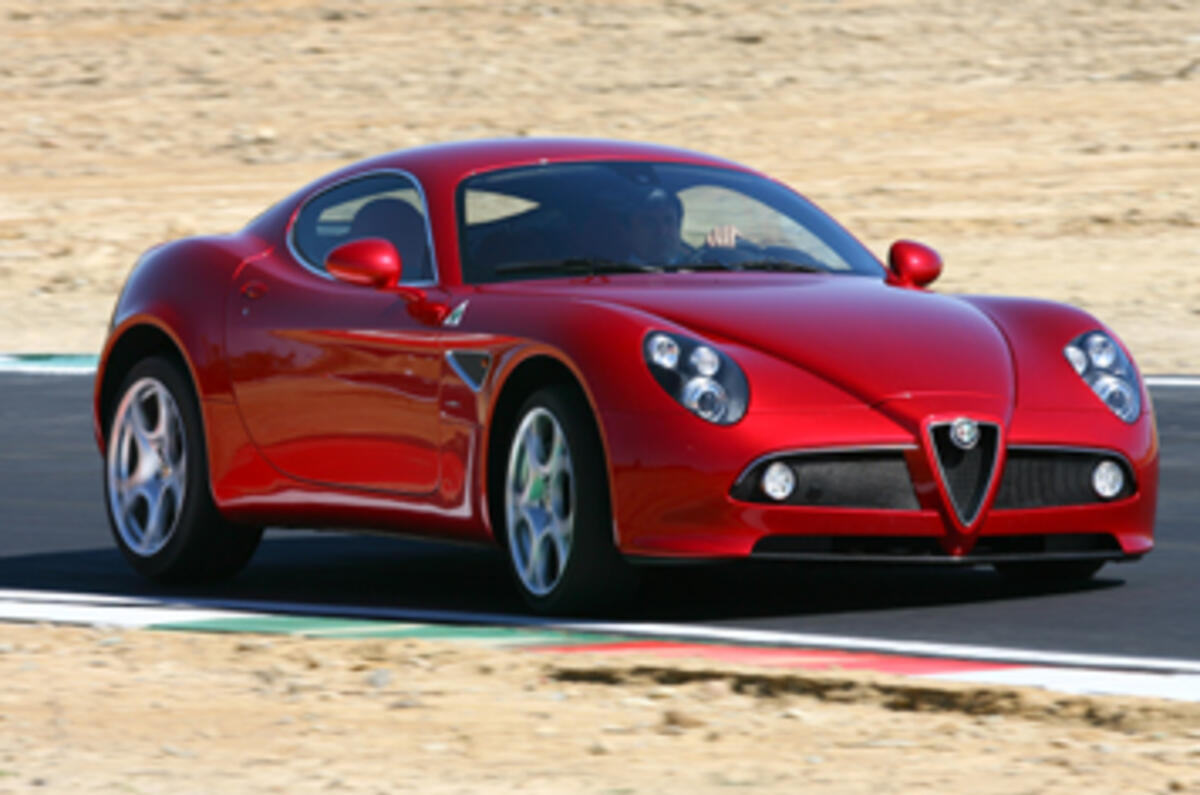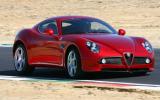What is it?
A concept car made real. Four years ago, when Alfa Romeo was at its lowest ebb, its chief designer, Wolfgang Egger, came up with a morale-boosting concept for a new £100,000 two-seater coupe to demonstrate that the great marque had not forgotten its roots.
The name, 8C Competizione, referred directly to Alfa’s greatest racing days. There was a clamour for the car to be built, but Fiat’s management was having enough trouble at the time finding separate paths for Ferrari and Maserati, and declined to complicate things further by tossing a new Alfa into the confusion.
The 8C concept faded slowly from notice until 2006 when, with the 159 and Brera safely launched and a more pragmatic Alfa management in place the company decided a limited run of production 8Cs would spruce up Alfa’s performance image.
Work on a production run of 500 cars began in secret early in 2006 and was announced six months later at the Paris show. This week, Alfa proudly unveiled the finished 8C, barely 18 months after first deciding to build it — and allowed Autocar to drive it on the Balocco test track in northern Italy.
Is it really an Alfa?
Much of the 8C’s chassis recipe comes from Maserati. Take one Maserati Quattroporte floorpan, shorten it 40cm (to 2650mm), build a new rear structure then bolt in the Quatroporte’s subframe-mounted, double-wishbone suspensions, suitably adapting them with special springs, dampers, anti-roll bars, suspension bushes and body fixings.
Give it a new steering rack requiring just 2.5 turns lock to lock and mighty ventilated disc brakes all round (360mm diameter front, 330mm rear).
Need big power? Use a newly bored and stroked version of the quad-cam Maser V8, now displacing 4.7 litres instead of 4.2, plus new heads with re-shaped combustion chambers. Tell the world this bigger engine will eventually go into other Maseratis models, but never in 8C tune: 450bhp at 7000rpm plus 354lb ft at 4750 rpm.
Like in Maseratis, send drive through a torque tube to the six-speed “cambio corsa” gearbox, rear-mounted in unit with the final drive and limited-slip differential, its shifting handled by steering column paddles.
The 8C’s unique feature is its semi-monocoque body/chassis whose external and internal surfaces are all formed in carbonfibre and tuned (especially underneath) in the wind tunnel of race car maker, Dallara.
The finished car weighs 1585kg at the kerb, around 100kg less than the old 4.2-litre Maserati coupe, and the body contributes greatly to the car’s impressive rigidity, a fact you notice as soon as you start to drive.
Not that 8C’s character is as you expected: the combination of “technical” carbon surfaces, sumptuous Italian leather and some impressive milled aluminium brightwork inside give the aura of a long-legged GT.
Only the firm bucket seats, well-bolstered at the sides and ribbed in the way of old Alfa Coupes, speak of very high performance.
What’s it like?
You start the engine, and any confusion dies. This car has just about the best and most classically sporty engine note ever: a powerful bark-rumble that rises to a genuine Le Mans howl, accompanied by an amazing crackle on the overrun. Very Italian.









































































Add your comment